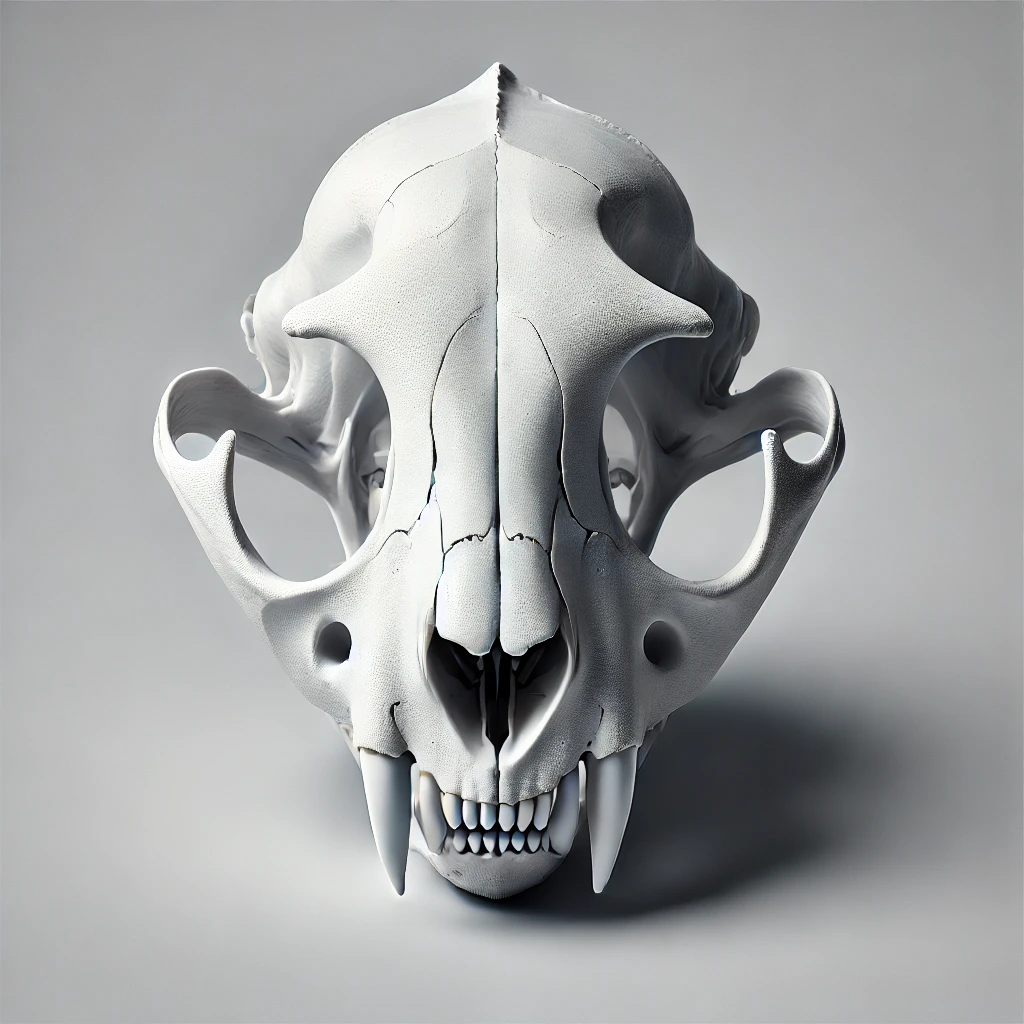The Fascinating Anatomy of Cat Skulls: Nature’s Marvels
Cats, both domestic and wild, are among the most beloved animals in the world, captivating us with their agility, grace, and playful antics. However, beneath their soft fur and charming demeanor lies a complex structure that plays a crucial role in their survival: the cat skull anatomy. Understanding this intricate framework is essential to appreciate how these fascinating creatures hunt, communicate, and interact with their environment. In this article, we’ll delve into the anatomy of cat skulls, explore their evolutionary significance, and uncover some intriguing facts about these remarkable structures.
Understanding Cat Skull Anatomy
The cat skull is an intricate assembly of bones that protects vital organs and provides the framework for the cat’s face. Here are some key components:
- Cranial Bones: The cat skull consists of several cranial bones that encase the brain. These bones include the frontal, parietal, temporal, and occipital bones, all fused to form a protective barrier.
- Facial Bones: The facial region is made up of various bones, including the maxilla (upper jaw), mandible (lower jaw), nasal bones, and zygomatic bones (cheekbones). These bones give the cat a distinctive facial structure, including its wide-set eyes and sharp, prominent cheekbones.
- Dental Structure: A cat’s skull houses 30 teeth, perfectly adapted for their carnivorous diet. These include sharp incisors for gripping and tearing, canine teeth for puncturing prey, and molars for shearing meat. The arrangement and shape of these teeth are crucial for their feeding habits.
- Foramen Magnum: This is the significant opening at the skull’s base that allows the spinal cord to connect with the brain. In cats, the position of the foramen magnum indicates their agility and ability to rotate their heads rapidly.
- Temporal Fossa: This depression on the side of the skull accommodates the temporalis muscle, which is essential for chewing. The temporal fossa’s size and shape can vary among cat species, reflecting their dietary needs and habits.
Evolutionary Significance
The evolution of the cat skull has been shaped by millions of years of adaptation to their environment. Here are some insights into its evolutionary significance:

- Predatory Adaptations: The structure of the cat skull has evolved to enhance their predatory skills. The forward-facing eyes provide binocular vision, allowing for better depth perception, vital for stalking and capturing prey. The powerful jaw and sharp teeth are designed for delivering a quick, lethal bite.
- Variation Among Species: While domestic cats share a similar skull structure, wild cat species like lions, tigers, and cheetahs have unique adaptations that cater to their specific hunting strategies. For example, a lion’s skull is more robust, enabling it to take down larger prey, whereas a cheetah’s skull is more streamlined, aiding in high-speed chases.
- Fossil Evidence: Fossilized cat skulls provide valuable insights into the evolutionary history of felids. By studying these skulls, scientists can trace the lineage of modern cats back to their prehistoric ancestors, shedding light on how they have adapted to diverse environments over time.

Intriguing Facts About Cat Skulls
- Size and Shape: The size and shape of a cat’s skull can vary significantly based on its breed and species. For instance, the skull of a Persian cat is rounder compared to the elongated skull of a Siamese cat.
- Dental Formula: A cat’s dental formula is an interesting aspect of their skull anatomy. The typical formula is: 2/3, 1/1, 3/2, 1/1 = 30 teeth in total. This formula reflects their carnivorous diet.
- Skull as a Cultural Symbol: In various cultures, animal skulls, including those of cats, are often used in art and symbolism. They can represent mystery, the cycle of life and death, or a reminder of the natural world’s fragility.
- Skull Variation in Domestication: Domesticated cats have undergone some cranial changes due to selective breeding. Certain breeds exhibit distinct skull shapes, such as the flat-faced Persian or the elongated face of the Oriental Shorthair.

Conclusion
The cat skull is a remarkable structure that encapsulates these beloved creatures’ fascinating evolution and adaptations. From its intricate anatomy to its significance in hunting and survival, the cat skull tells a story of evolution, adaptation, and the enduring bond between humans and felines. Understanding the anatomy and significance of cat skulls enhances our appreciation for these animals and highlights the incredible diversity of life on our planet.
Whether you are a cat owner, a biologist, or simply a lover of nature, delving into the world of cat skulls opens up a realm of knowledge that enriches our understanding of these fantastic animals.
Maryland Department of Natural Resources – Key to Common Mammal Skulls: This resource includes detailed anatomical information about various mammals, including domestic cats. It features a key for identifying different skulls based on their anatomical features. You can access it here
Maryland Department of Natural Resources